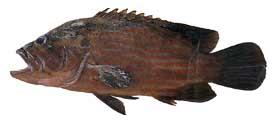By definition, dried fish is
cured (salted) and sun-dried or artificially dried fresh or boiled fish. The
traditional drying and salting method of preserving fish continues to be very
popular today simply because it produces such great flavor, long shelf life and
more expected quality attributes of consumers. For centuries salted fish was a
basic food in Sri Lanka as it was less expensive than meat and other protein
sources. Even today because of the simplicity of the salting process, the low
cost of production and the ease with which it combines with other preservation
methods, such as drying or smoking.
The fisheries sector in Sri Lanka
plays an indispensable role in the economy of country contributing around 1.2%
to the GDP. Fish products are an important source of animal protein, providing
around 70% of the animal protein consumed in the country. Dried fish is
considered as the poor man's protein because; it is the main source of animal
protein of the households in low-income groups, especially the people living in
areas other than the coastal belt. Main dried fish species produced in Sri
Lanka, are Katta, Balaya, Keeramin, Seer, and Maduwa. Trincomalee, Mannar,
Kalpitiya, Matara, Jaffna are the main districts which are produced marine
dried fish. Dried fish industry is mainly carried out as cottage level
industry. Traditional home scale technique is mainly performed for dried fish
production by women as an extra source of income. Inland dried fish industry
also has been developed in Anuradhapura, Pollonaruwa and Moneragala districts.
Salting
and sun drying or smoke drying of fish is a traditional method of fish
preservation employed in Sri Lanka. Dried fish production in the country mainly
consists of micro level cottage enterprises, carried out predominantly by
fisherwomen as a supplementary source of income. Dried fish is highly shelf
stable commodity that cannot easily deteriorate during the supply chain from
the producer to the final consumer. With the changes in life style of the Sri
Lankan population the demand for dried fish has changed and the demand for
better quality dried fish that are safe for human consumption, has increased.
Therefore, dried fish quality and safety is a prime criterion in gaining access
to competitive markets.
Quality defects and safety hazards in dried fish may
result in consumer rejection and lower sales. Deterioration of quality and
safety attributes of dried fish may be the result of biological,
microbiological, physiological, biochemical or physical factors acting on the
dried fish. These factors are usually the result of a lack of proper training
for product handlers, inadequate infrastructures and technologies, unnecessary
delays, ineffective quality control and adverse environmental conditions. Proper
food quality and safety management practices can be used to enhance the safety
and quality of dried fish. Food standards, laws and regulations can also be
used to maintain uniformity of dried fish quality and safety. In addition to
that dried fish can be inspected by either governmental agencies or other
authorized bodies to ensure a product's adherence to regulations regarding
quality, wholesomeness and safety.
 |
| Dried Fish |
Comments
Post a Comment